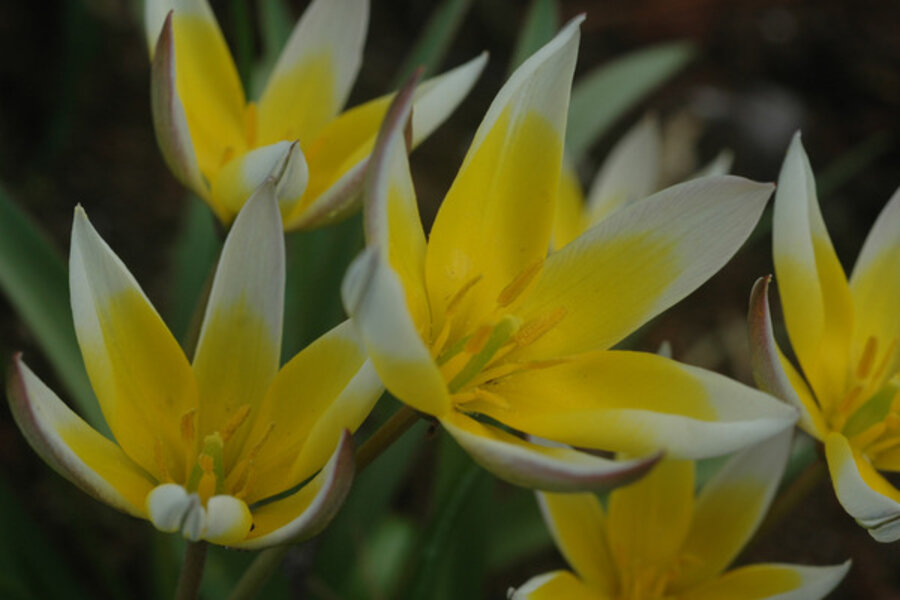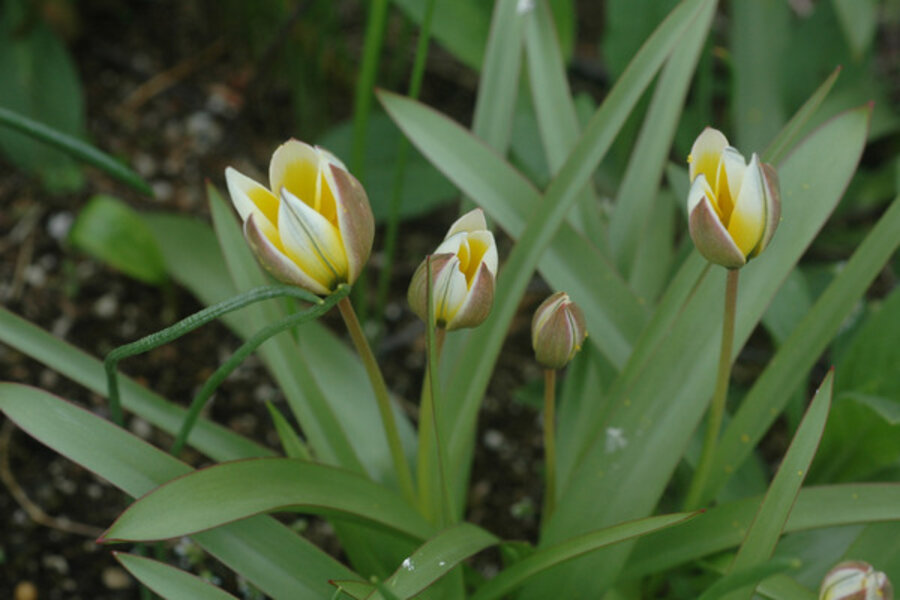The little tulips: Tulipa tarda proves that less is more.
Loading...
The showy clumps of hybrid tulips that I planted last fall are in their glory right now. But next spring they will be less impressive, and in three years I’ll need to fill their spot with some other plant. Unlike daffodils, tulips are not “forever flowers.”
But I have one tulip that returns year after year: Tulipa tarda. It’s a species tulip — some gardeners call them botanical tulips — which means it appears in nature and is “unimproved,” not a creation of clever Dutch breeders, the people who have been creating spectacular tulips since the late 1500s.
Subdued beauty
Hybrid, or Dutch, tulips are known as “the peacocks and parrots of the bulb world,” a salute to their brilliant colors and forms. My little species tulip is neither peacock nor parrot but lovely in its own right.
Moreover, it’s one of the few species tulips you can find at garden centers and online suppliers. And the price is right. Brent & Becky’s Bulbs, a superb bulb supplier located in Virginia, offers 50 bulbs for less than $20.
In early spring, a single bulb produces between three and eight blooms, each about two inches across with large yellow centers edged with white. Upward facing and star-shaped, the flowers are held on short stems — plants are about eight inches tall — and open fully only on sunny days.
Tulipa tarda produces offsets, but it also self-seeds. Some gardeners collect the seeds, sow them in pots, and then transfer the seedlings to the garden. I leave the plants to their own devices, and they have spread nicely. One warning: The emerging leaves look like grass, so it’s easy to mistake them for weeds.
Grow it almost anywhere in the U.S.
Tulipa tarda does well in USDA Hardiness Zones 3 to 8 or 9, which is nearly everywhere, and wants full sun and average, well-drained soil. Although cold hardy, it doesn’t need a long cold period in order to to bloom, so it is as well suited to the Pacific Northwest as it is to my garden in Vermont.
Once you’ve discovered the merits of Tulipa tarda, you’ll want to add other species tulips — there are about 150 to choose from. A superb source of information about both species and hybrid tulips — and other bulbs — is the International Flower Bulb Centre. Located in the Netherlands, of course.
-----
Karan Davis Cutler is one of more than a dozen garden experts who blog regularly at Diggin’ It. To read more by Karan, click here. She's a former magazine editor and newspaper columnist and the author of scores of garden articles and more than a dozen books, including “Burpee -- The Complete Flower Gardener” and “Herb Gardening for Dummies.” Karan now struggles to garden in the unyieldingly dense clay of Addison County, Vt., on the shore of Lake Champlain, where she is working on a book about gardening to attract birds and other wildlife.








